Idea by
AB/A Alessandro Bellini ARchitect
Call for ideas 2016
Brescia agri-cultural City
Brescia agri-cultural City
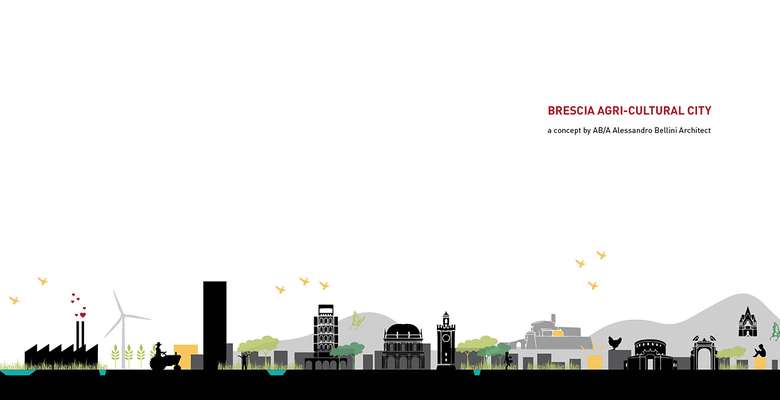
AGRI-CULTURAL CITY aims to turn non-places and wasted lands into resources.
Extrapolating the residential parts of the city emerges already a continuous system consisting of industrial and agricultural areas, which holds together, the residential parts.
The aim is then to map vacant lands and linking them to the existing parks and agriculture areas, through micro and macro-scale interventions. The goal is to create a new suburban image, which would reflect a new concept of the city: BRESCIA AGRI-CULTURAL CITY
There's not an aprioristic fixed masterplan, but rather a list of possible scenarios.
Create economies that would enable collective utilities and companies more related to the environment and to social issues may be the only possible way out from this crysis. This effort must involve everyone.
Brescia could thus become a „model” city and. AGRI-CULTURAL CITY is indeed a strategy applicable also in other urban areas characterized by widespread industrial tissue in decline.
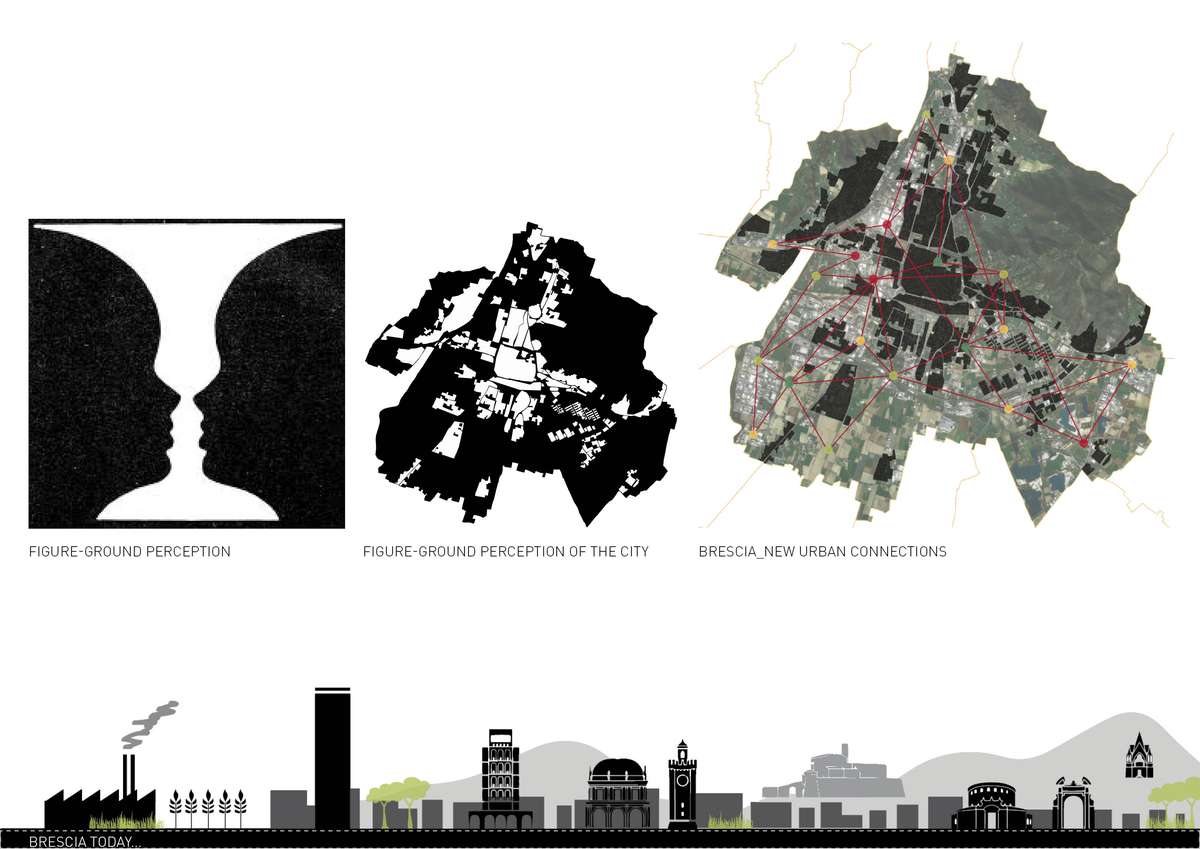
Because of the crisis of small and medium industries and the recent economic crisis, we must propose new models.
BRESCIA AGRI-CULTURAL CITY aims to turn non-places and wasted lands into resources.
If we extrapolate from Brescia the residential fabric emerges already a continuous system consisting of industrial and agricultural areas, which holds together, almost like an amniotic fluid, the residential parts. As in the figure-ground perception, it depends what you are focusing on.
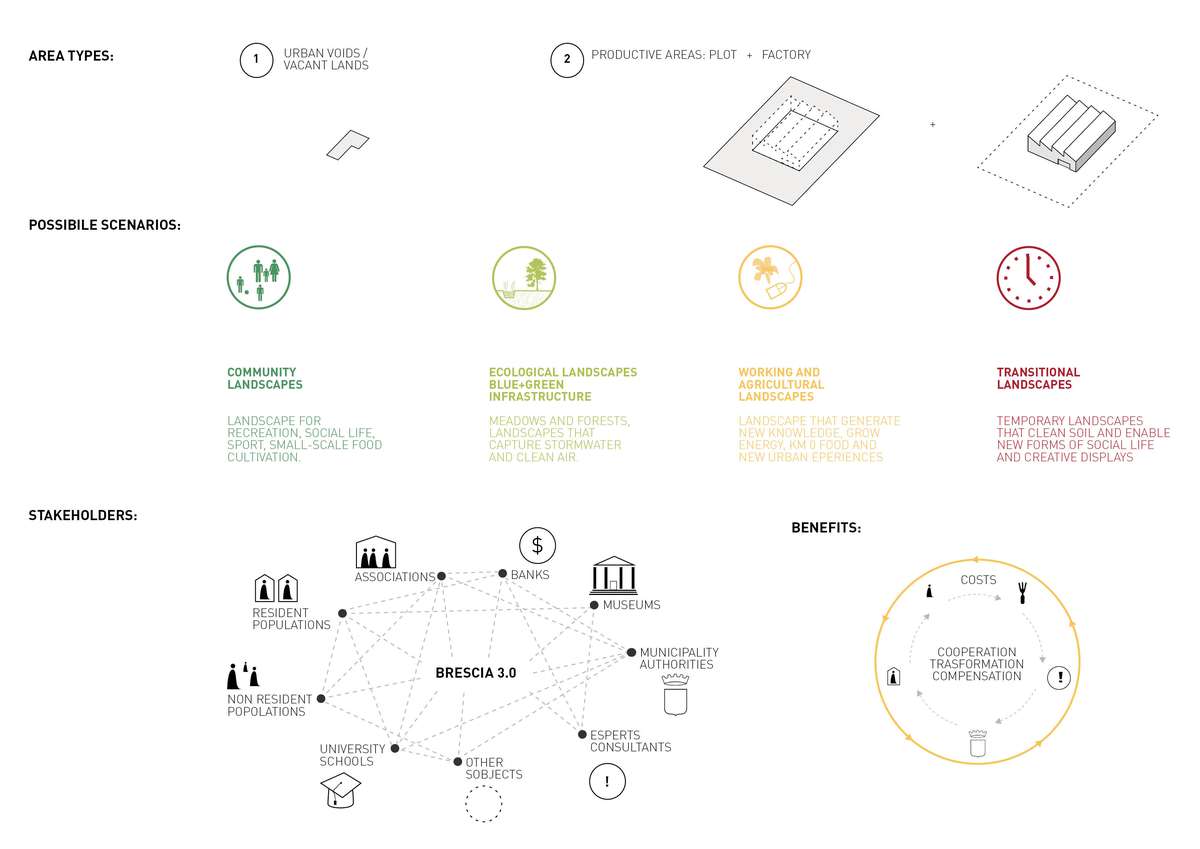
The aim is then to map vacant lands: urban voids, empty factory buildings and linking them to the existing parks and agriculture areas, through micro and macro-scale interventions.
There’s not an aprioristic fixed masterplan, but rather a list of possible scenarios, coherent with the concept of AGRI-CULTURAL CITY. The belief is that there exist converging interests that, through the involvement of stakeholders, can create jointly liable development possibilities.
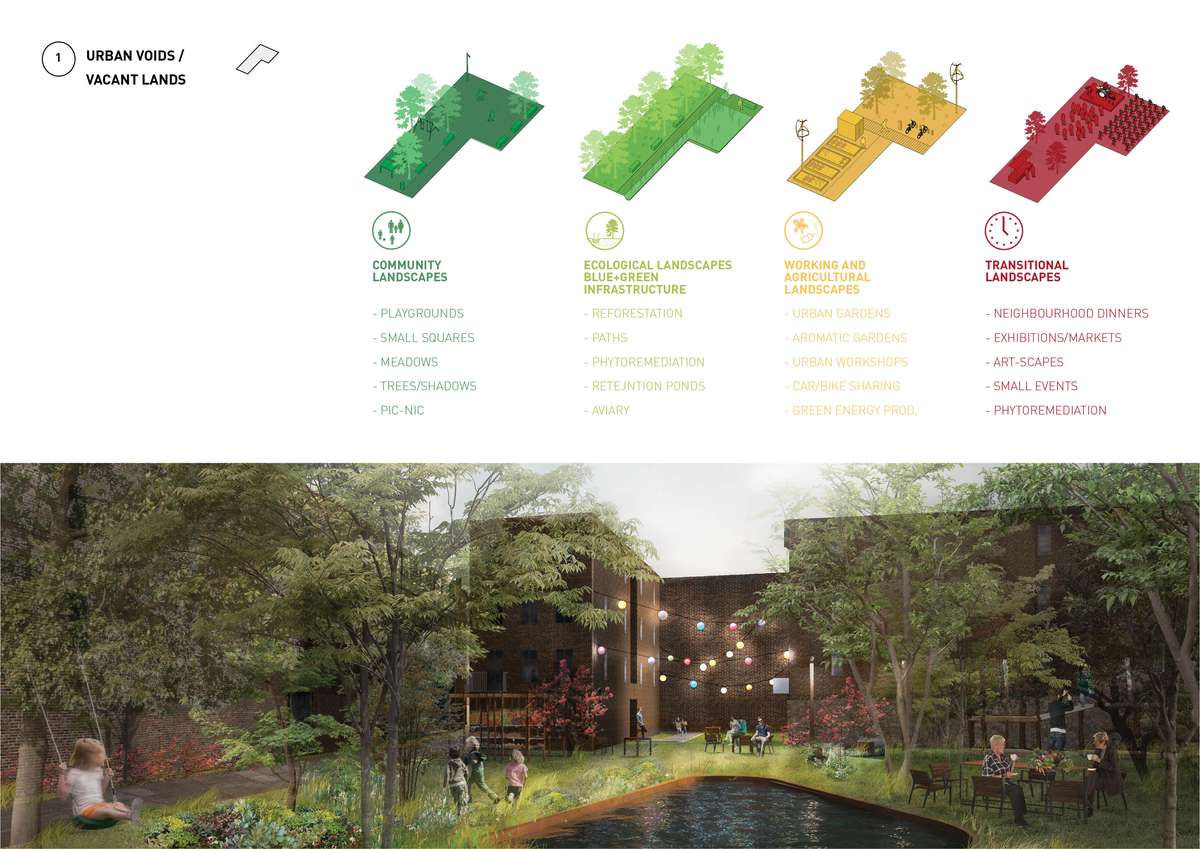
In small areas transformation processes will be easyer, but it will required a greater participation by the community. In small areas transformation processes will be easier, but it will required a greater participation by the community. Often these areas are non-places, so is important that the community will participate in such processes, to strengthen around them a sense of belonging.
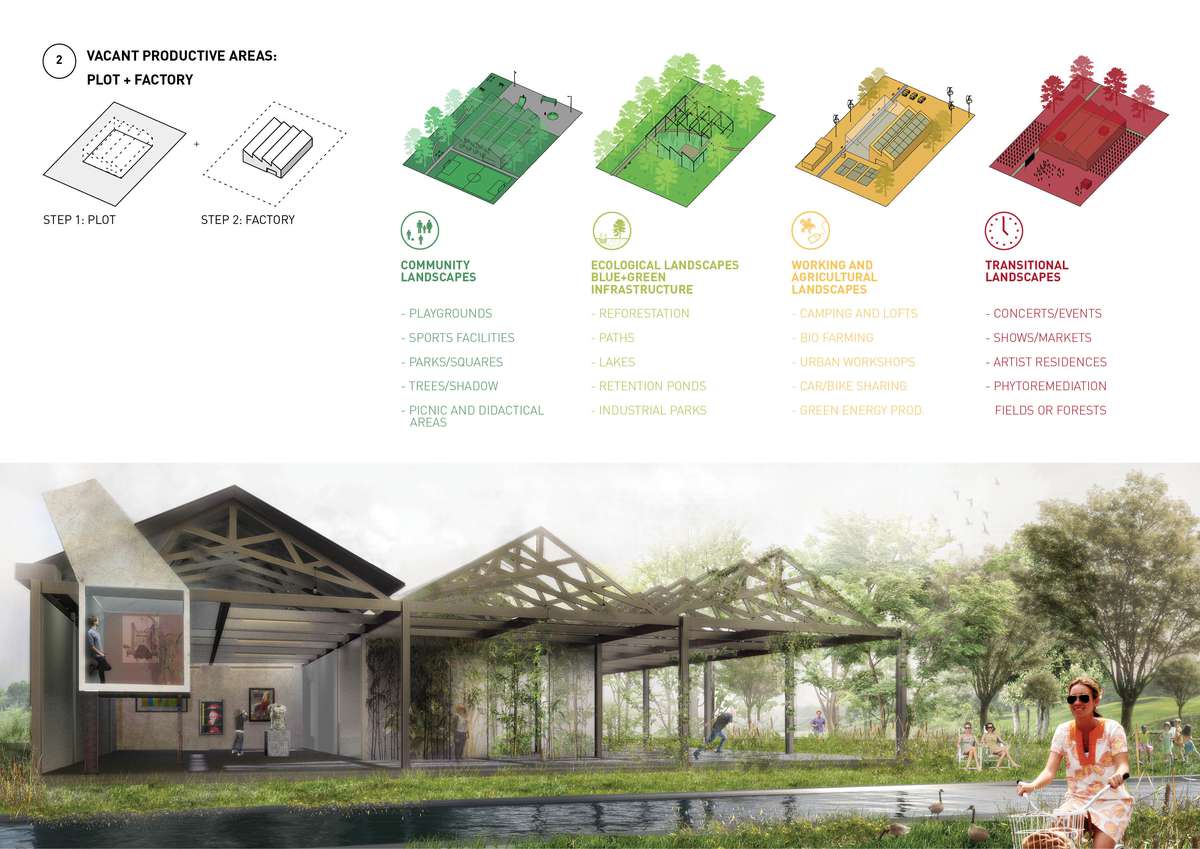
The transformation process gives priority to the voids.
Voids are normally more cheap and easy to develop, this first process could act also as a catalyst to the regeneration of the building.
Extremely important for this type of areas are the transitional landscapes, as a sign of the beginning of the regeneration process, at minimal costs.
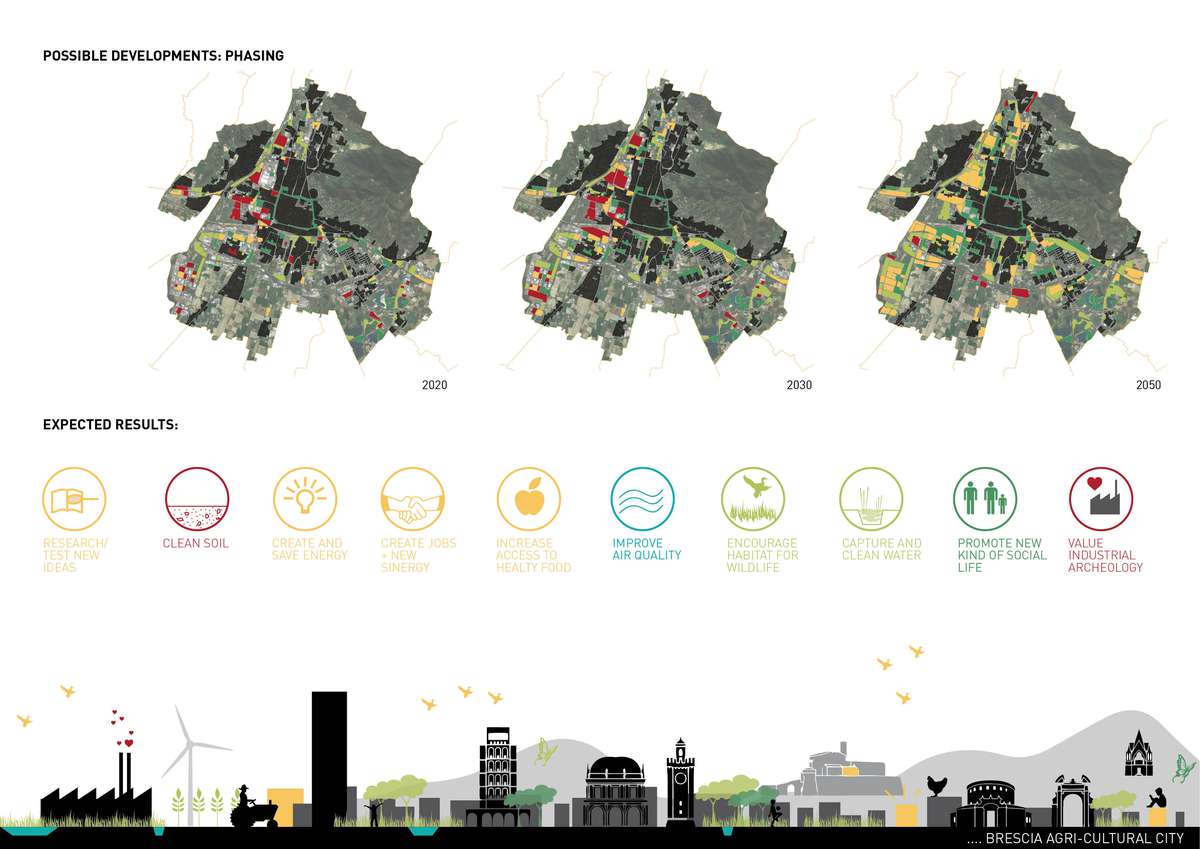
This process of change would be gradual, a viral action based not only on the transformation processes, but also on the dissemination and sharing of the participatory culture.
Brescia could thus become a „model” city and, promote itself.
AGRI-CULTURAL CITY is indeed a strategy applicable also in other urban areas characterized by widespread industrial tissue in decline.
Brescia agri-cultural City
Brescia agri-cultural City

AGRI-CULTURAL CITY aims to turn non-places and wasted lands into resources.
Extrapolating the residential parts of the city emerges already a continuous system consisting of industrial and agricultural areas, which holds together, the residential parts.
The aim is then to map vacant lands and linking them to the existing parks and agriculture areas, through micro and macro-scale interventions. The goal is to create a new suburban image, which would reflect a new concept of the city: BRESCIA AGRI-CULTURAL CITY
There's not an aprioristic fixed masterplan, but rather a list of possible scenarios.
Create economies that would enable collective utilities and companies more related to the environment and to social issues may be the only possible way out from this crysis. This effort must involve everyone.
Brescia could thus become a „model” city and. AGRI-CULTURAL CITY is indeed a strategy applicable also in other urban areas characterized by widespread industrial tissue in decline.
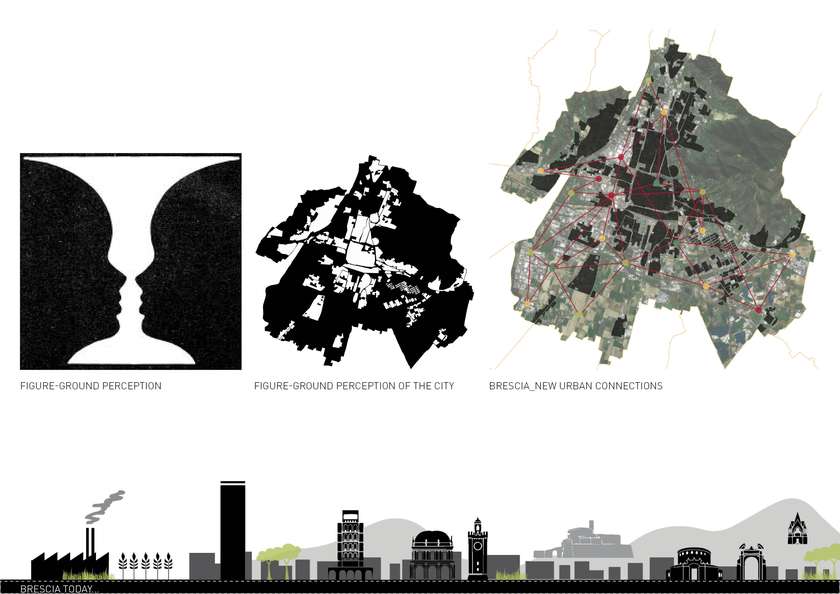
Because of the crisis of small and medium industries and the recent economic crisis, we must propose new models.
BRESCIA AGRI-CULTURAL CITY aims to turn non-places and wasted lands into resources.
If we extrapolate from Brescia the residential fabric emerges already a continuous system consisting of industrial and agricultural areas, which holds together, almost like an amniotic fluid, the residential parts. As in the figure-ground perception, it depends what you are focusing on.
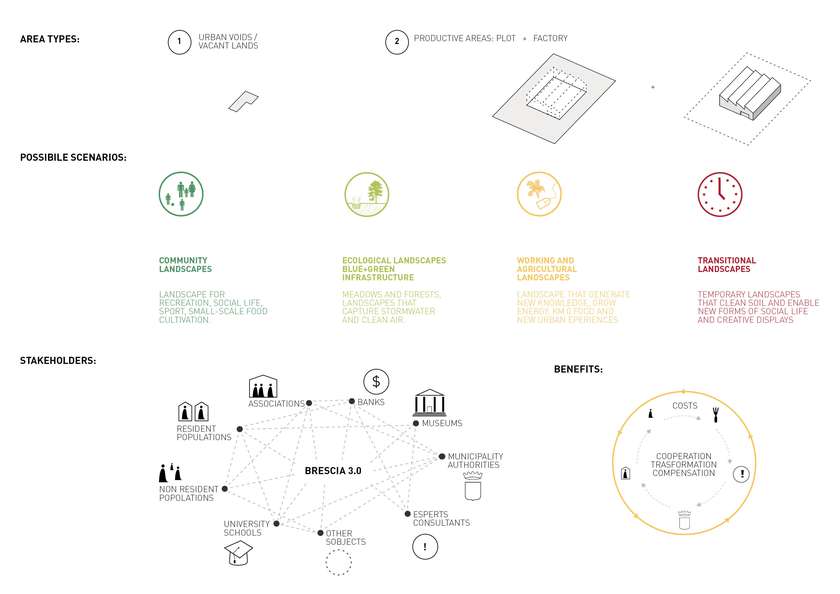
The aim is then to map vacant lands: urban voids, empty factory buildings and linking them to the existing parks and agriculture areas, through micro and macro-scale interventions.
There’s not an aprioristic fixed masterplan, but rather a list of possible scenarios, coherent with the concept of AGRI-CULTURAL CITY. The belief is that there exist converging interests that, through the involvement of stakeholders, can create jointly liable development possibilities.

In small areas transformation processes will be easyer, but it will required a greater participation by the community. In small areas transformation processes will be easier, but it will required a greater participation by the community. Often these areas are non-places, so is important that the community will participate in such processes, to strengthen around them a sense of belonging.
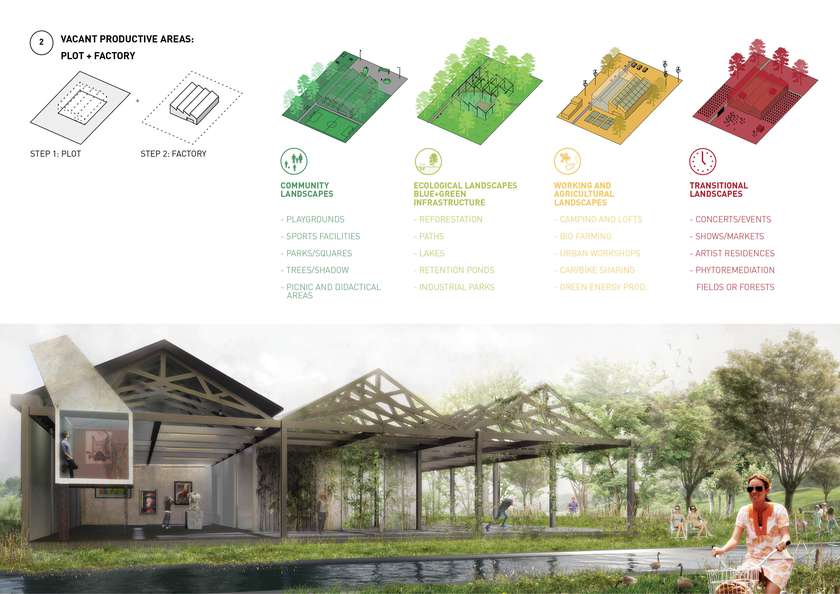
The transformation process gives priority to the voids.
Voids are normally more cheap and easy to develop, this first process could act also as a catalyst to the regeneration of the building.
Extremely important for this type of areas are the transitional landscapes, as a sign of the beginning of the regeneration process, at minimal costs.
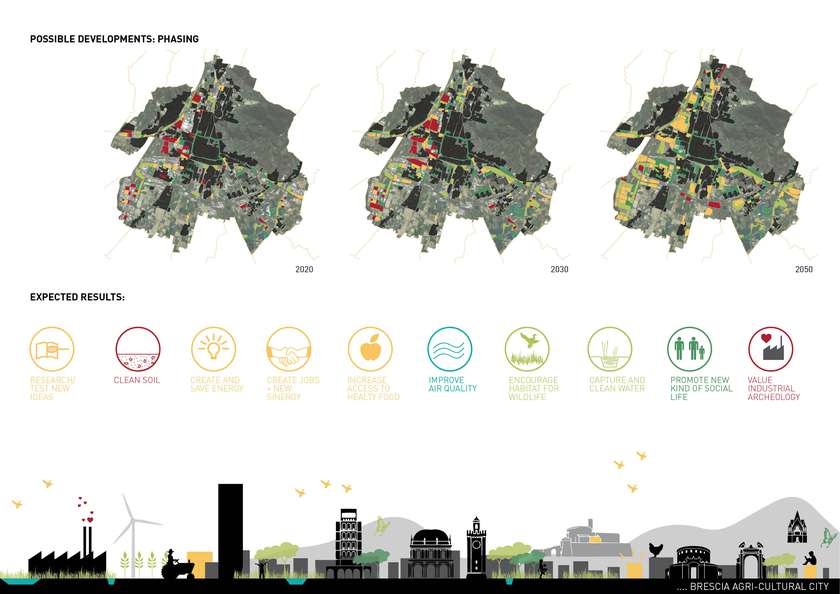
This process of change would be gradual, a viral action based not only on the transformation processes, but also on the dissemination and sharing of the participatory culture.
Brescia could thus become a „model” city and, promote itself.
AGRI-CULTURAL CITY is indeed a strategy applicable also in other urban areas characterized by widespread industrial tissue in decline.